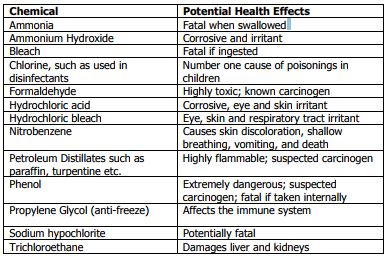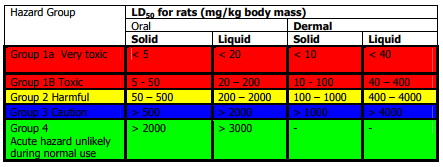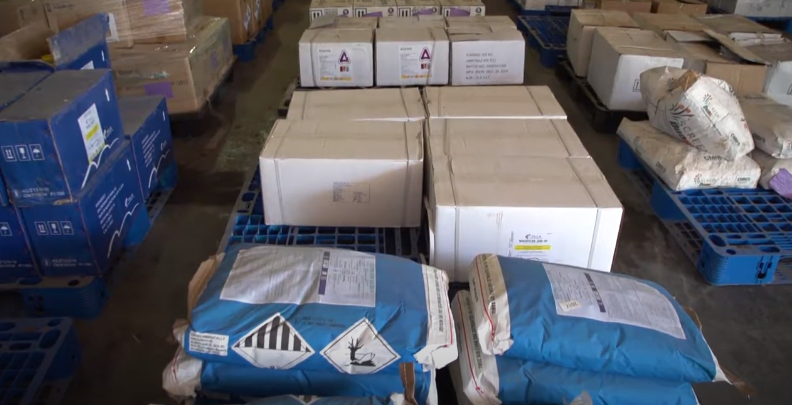
The concepts discussed may appear familiar. This is because it is the same basic information that is supplied in the Level 3 Documentation. The information and legislation does not change, what is important is that it is the responsibility of the supervisor or manager to ensure compliance to these. Management and must know the content of these regulations before compiling and conducting instructions to staff. It is the responsibility of supervisors to ensure that the requirements of all acts can be followed on the farm by providing relevant training, relevant equipment, and adequate infrastructure and correct safety equipment. Where a supervisor finds a problem regarding any of these issues, it must be reported in writing. Farms should have procedures in place to ensure that these documents can be officially documented and records kept. Once a formal complaint has been logged, ensure that you keep a copy of the documentation as proof that you have made such a complaint. Develop a schedule for inspections in stores to check if the goods are correctly stored. Develop a schedule to test the staff on the legislation that applies to them in order to ensure that they comply.
The majority of inputs used on a farm are chemicals. These chemicals include pesticides, fertilisers, cleaning agents and disinfectants. In some cases, it could also include acids and other corrosives. This session concentrates on the chemical inputs used on farm. The most important law that need to be adhered to are the Occupational health and Safety Act, the Agricultural Inputs Act and the regulations on transportation of hazardous goods.
Click here to download a handout that explains agricultural production inputs.
Toxicity of Chemicals Used on Farm
The toxicity of a chemical is identified as the amount of the compound that a person has to ingest to induce a negative effect. In the worst-case scenario, the effect would be death. The word hazard refers to the ability of a pesticide to cause harm. The main hazards associated with pesticides are the toxicity and flammability. The word risk refers to the possibility that a person handling the product if used according to the manufacturers’ directions will encounter the hazard accidentally. The directions referred to includes storage, transport and use. The risk is due to either a single or repeated exposure to the pesticide over a short period. Safety refers to the degree of freedom from risk. Safety precautions on labels are intended to reduce risks to acceptable levels
There are three key words normally used to identify the toxic properties of a chemical. These are:

This information should make one consider what the possible effect of chemicals could be on your health. These warnings posted on labels only take the acute effects into account, i.e. where death is induced. It does not consider the potential long effects such as cancer or reproductive malformations. Some common ingredients of commercial household products and their hazards are given below (Table 5.1)

Table 5.1 Potential hazard of some common chemicals
It is important that one is prepared for the use of any chemical, and that the proper safety and protective wear is used. Never eat, drink or smoke whilst using chemicals or cleaning agents.
Always treat cleaning chemicals as if they are pesticides. Locate, identify, and label poisonous products within your home and work environment clearly so that everybody could understand that these are dangerous chemicals.
Click here to view a video that explains pesticide toxicity from the ground up.
The registration of a pesticide places a pesticide in one of four hazard groups. The Hazard groups are based on their toxicity to humans, as tested on the formulated product. The hazard groups are:

The safety precautions printed on pesticide labels, are concerned with the "toxicity" hazard to people and the environment, and how these hazards can be reduced.
An indicator of hazard is the acute toxicity of a pesticide or the capacity of a compound to produce injury or death due to a single dose. This dose is expressed as an Acute LD50 value. The acute LD50 is the dose of a compound, which will kill 50% of the experimental group of animals and is expressed mg pesticide per kilogram body mass. Three methods of administering the chemical are generally used, oral (by mouth) dermal (applied to the skin) and inhalation (through the nose). When comparing LD50 values, they should be interpreted such that the lower the LD50 the more toxic the compound is. The grouping of pesticides according to acute toxicity is given in Table 4.2.

Table 5.2. Grouping of pesticides according to acute toxicity
The hazard grouping for some common substances is:
- Strychnine - Group I
- Petrol - Group II
- Aspirin - Group III
- Table salt - Group IV
Click here to download a handout that explains LD 50 values for pesticide toxicity.
Chemical Storage
The storage of chemical should be handled as one would handle pesticides. A system must be available where chemicals are stored in designated areas. The use of each must be recorded so that the volumes used can be traced.

Always ensure that incompatible chemicals are stored separately (see guidelines below).
- Store chlorine-based products separately from acids, oxidising agents and fuel oil.
- Hypochlorite must be stored away from amines.
- Per acetic acids should be kept away from acids or alkalis as they form explosive mixtures.
- Disinfectants should be stored away from fuse boxes, open flames and heat sources.
- Bulk cleaning agents should be kept in clean, dry, well-ventilated and secure places.
- Flammable products (e.g. paraffin or mentholated spirits) should be stored separately.
- Store pesticides separately.
- Always keep an updated log of the contents and use of chemicals in a store.
- Always store chemicals in their original containers with the labels attached. Also label spray bottles clearly and correctly. Never pour chemicals into other containers such as soft drink bottles.
- Never put corrosive chemicals (acids) into spray bottles. x Discard unlabelled chemical containers immediately.
- If the content of a container is unknown, discard it correctly according to the disposal protocols.
Pesticides should always be stored under secure, dry and dark conditions. Pesticides must be stacked separate from other inputs and clearly labelled. Pesticides must never be decanted into other containers.
Ideally mixing should take place near a storeroom with suitable facilities, such as good ventilation, water supply, suitable containers, sand and or sawdust to clean up spills and a disposal area away from a watercourse. Workers should always wear two-piece long sleeve cotton working clothes, boots, gloves and masks during mixing and spraying. Empty containers must either be recycled or punctured and buried and must never be used for any other purpose, especially for transport of food or water.
Never eat, drink or smoke when mixing or applying pesticides. All workers must be trained so that they are not exposed to unnecessary risks.
Click here to view a video that explains farm chemical safety: storing chemicals on farms.
Click here to view a video that explains the safe handling of agrochemicals.